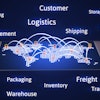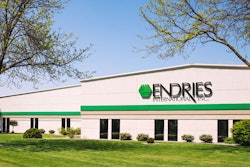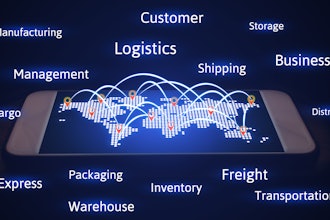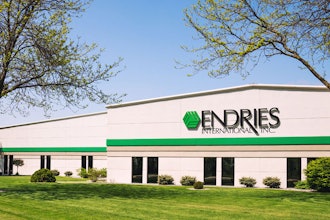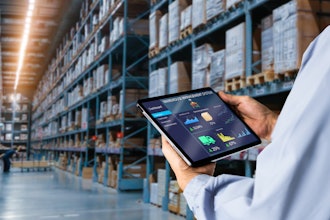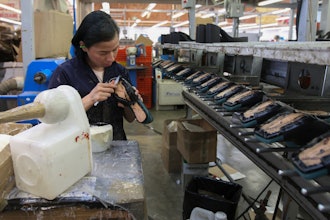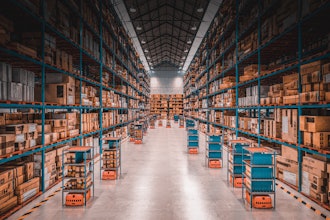New trends, tools, and techniques to help industrial distributors better manage their supplier relationships are becoming increasingly prevalent in the business-to-business marketplace. Kristin Muhlner, CEO of RollStream, a provider of enterprise resource management technology, recently sat down with Industrial Distribution to discuss supply relationships, some of the new technologies, and how they are being received by the industrial distribution community.
Tell me a little bit about RollStream and its involvement in supply chain management?
We deliver software as a service. So it’s all hosted in the cloud, to companies that typically have large supplier communities who are looking to manage the full life cycle of their supplier relationship…What we have attempted to solve at RollStream, is to fill the gap essentially between those transaction systems and the people who actually do the work, to really automate and provide productivity tools for the full life cycle of the relationship between buyers and suppliers, ... (and) we have done it using social software paradigms and Web 2.0 techniques. Our platform, at its core, has essentially a company directory, a supplier directory, that’s extendable by the buyer, by the distributor, and allows the distributor to extend the attributes and the information they want to capture from suppliers along any vector that they’re interested in. Suppliers then manage their own profiles in the cloud, in much the same way you manage your Facebook or your LinkedIn profile … We’re trying to take what works best in some of these other technologies and apply them in this context. On top of all that, we layer a set of process applications for specific business-to-business processes that tend to be similar over, and over, and over…We tend to go to market with four major solutions. One (is) very focused on supplier discovery. There’ a solution around information management, a solution that focuses very much on compliance … And then the fourth solution area is project management, being able to draw quantitative and qualitative data together and present that to suppliers, and then build improvement plans.
How do some of these new tools and techniques for managing supply relationships address the issue of network security?
First of all, all the data and all the information has got to be encrypted. That’s just sort of a basic, so you’re not asking people to share information unless you know that it’s going to be completely secure. All of (RollStream’s) environments are fully encrypted, and all of the interactions are fully encrypted as a result. That’s one level of comfort …The second thing we find is that, even though companies are getting more comfortable with cloud-based solutions, they still want to have some level of data isolation … That’s an important thing, particularly if you’re going to multiple companies in the same domain, that they really protect their supplier relationships, and in some cases feel they’re a strategic advantage and they don’t want other people to know about them. Giving a distribution customer the comfort that this is their data, they own it, they manage it, they allow access if they choose, suppliers can’t see one another, can’t see one another’s profiles, unless that’s something that the distributor wants to offer. It’s purely their gated community, if you will. That’s the second really important aspect of making sure the data is there ... Our customers are pretty explicit with us, in terms of what they expect. And in turn, what we turn around and are willing to commit to, in terms of …Even if my data is sitting out there in the cloud, I know it’s secure.
How has the ever-changing technological landscape affected some of the options businesses have when it comes to managing supplier relationships?
The reality is that there is a really profound effect on business in that, for the first time, you’ve got I think a very rich set of application functionality that you can lease. Not only can you lease it, but you can do that without requiring your IT people to do anything at all. I think what’s interesting for businesses, is that it allows them to really start focusing on what their core competencies are … I really think it allows companies to focus, it allows companies to have more manageable IT environments, and have their IT staff to be focused on those differentiating systems that are important to support the business. It gives business people flexibility … I think we’re really just at the beginning of how that’s going to evolve, and how we’re going to see companies embrace this technology over time. But absolutely, no question, I think that’s the big game-changer.
How do some of these trends and tools better serve the industrial distributor’s need to understand customer issues and how they are affecting purchasing decisions?
At least with RollStream, we go to market with a solution that’s very focused on supplier/community management. It actually can be leveraged, and we have customers who leverage it both for customer/community management and for supplier/community management. It’s really general purpose, but we tend to market it largely upstream as a supply chain-oriented solution. And so I think that collaborative tools and techniques can absolutely be used and applied as we’re seeing in a consumer context. It absolutely can and should be applied in an industrial or more general business-to-business context to gather customer feedback and to collaborate with customers around issues. One of the things we found interesting is seeing how, in particular, or distribution customers can draw their customers and their suppliers into a community together to collaborate around solving a problem …And that’s big … It’s interesting because it also means that distributors have to be willing to cede some level of control in the dialogue, and to allow the manufacturers to participate. But ultimately it’s all for the greater good of the supplier. And at the end of the day, the customer is going to pick up on that, and that’s going to build a stickier relationship all the way around.
How are some of the trends and technologies being received by the industrial distribution community?
I would say it depends. It very much depends on the organization. And it very much depends upon the people within that organization. I would classify it as a conservative sector. That being said, I think it’s been a sector that’s free to spend money on technology when it was there and really demonstrated a real return on investment. So you’re not going to see companies take a flier. They’re not just going to trust you … I think once that’s established, I think you see these organizations really embrace very aggressively and get very excited about how they can sort of apply it in new and unique ways … So I think that desire is there, as long as the true benefits are really there as well.




